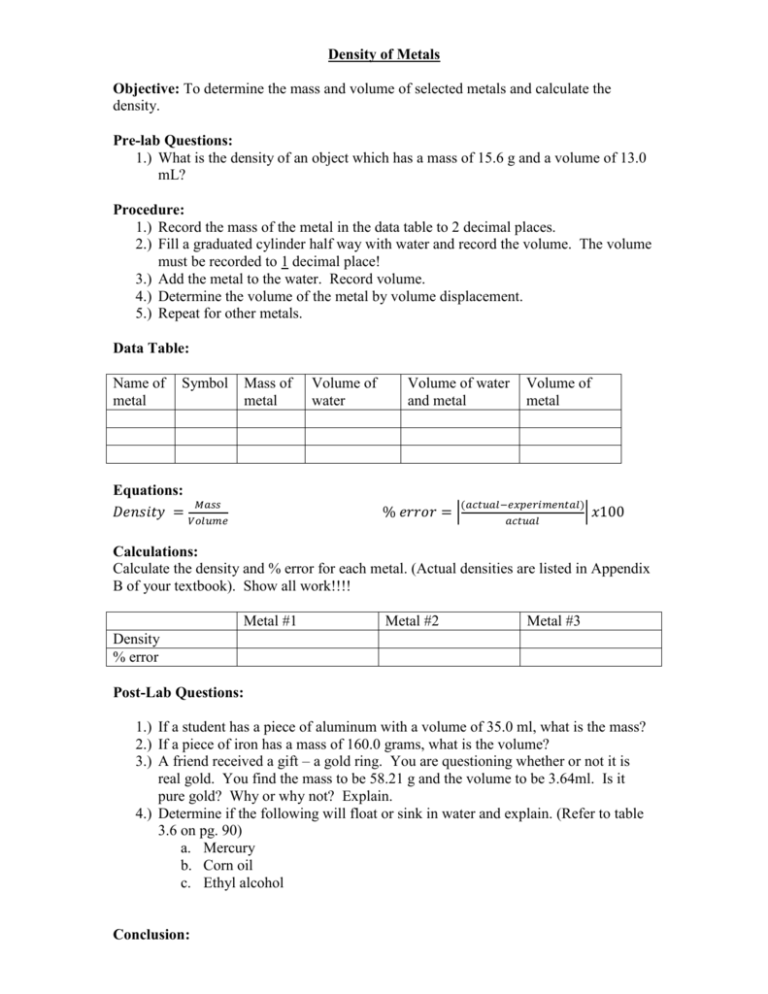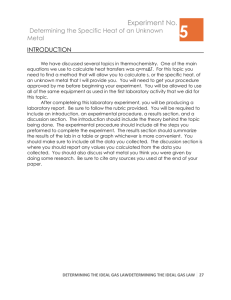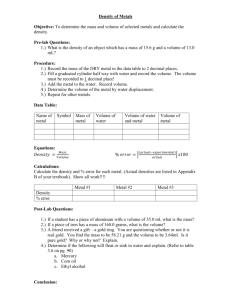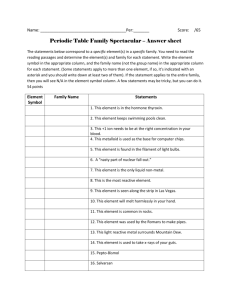Lab: Density of Metals
advertisement

Density of Metals Objective: To determine the mass and volume of selected metals and calculate the density. Pre-lab Questions: 1.) What is the density of an object which has a mass of 15.6 g and a volume of 13.0 mL? Procedure: 1.) Record the mass of the metal in the data table to 2 decimal places. 2.) Fill a graduated cylinder half way with water and record the volume. The volume must be recorded to 1 decimal place! 3.) Add the metal to the water. Record volume. 4.) Determine the volume of the metal by volume displacement. 5.) Repeat for other metals. Data Table: Name of metal Symbol Mass of metal Equations: 𝑀𝑎𝑠𝑠 𝐷𝑒𝑛𝑠𝑖𝑡𝑦 = 𝑉𝑜𝑙𝑢𝑚𝑒 Volume of water Volume of water and metal Volume of metal (𝑎𝑐𝑡𝑢𝑎𝑙−𝑒𝑥𝑝𝑒𝑟𝑖𝑚𝑒𝑛𝑡𝑎𝑙) % 𝑒𝑟𝑟𝑜𝑟 = | 𝑎𝑐𝑡𝑢𝑎𝑙 | 𝑥100 Calculations: Calculate the density and % error for each metal. (Actual densities are listed in Appendix B of your textbook). Show all work!!!! Metal #1 Metal #2 Metal #3 Density % error Post-Lab Questions: 1.) If a student has a piece of aluminum with a volume of 35.0 ml, what is the mass? 2.) If a piece of iron has a mass of 160.0 grams, what is the volume? 3.) A friend received a gift – a gold ring. You are questioning whether or not it is real gold. You find the mass to be 58.21 g and the volume to be 3.64ml. Is it pure gold? Why or why not? Explain. 4.) Determine if the following will float or sink in water and explain. (Refer to table 3.6 on pg. 90) a. Mercury b. Corn oil c. Ethyl alcohol Conclusion:








